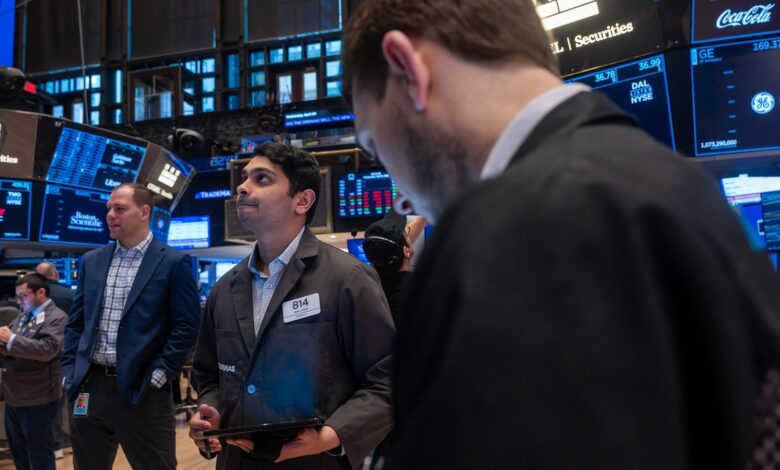US stocks climb, defying fears of escalating global trade war

The stock market in the United States experienced a rollercoaster ride on Wednesday, with U.S. stocks defying fears of a global trade war and climbing higher despite retaliatory tariffs imposed by China and the European Union on American goods.
The Dow Jones Industrial Average saw a modest increase of 60 points, or 0.15%, while the S&P 500 rose by 0.4%. The tech-heavy Nasdaq outperformed, surging by 1.2%.
However, the bond market painted a different picture as a selloff occurred, pushing bond yields higher and sparking concerns about the stability of stocks.
President Donald Trump’s latest round of tariffs on Chinese goods raised the cumulative rate to 104%, prompting Beijing to retaliate with tariffs that brought the total to 84% on U.S. goods.
The impact of these tariffs was felt across Asian markets, with Japan’s Nikkei index dropping more than 5% and Taiwan’s stocks falling by over 5.7%. Other major indices in Asia, such as Singapore’s STI, South Korea’s KOSPI, Australia’s S&P/ASX 200, and India’s NIFTY 50 also experienced losses.
In China, Hong Kong’s Hang Seng index dipped by 0.4%, while Shanghai’s SSE Shanghai Composite Index managed to post gains of 1.1%, thanks to state-owned investors known as the “National Team.” Shenzhen’s SE Composite also rose by 2.2%.
In Europe, key indices opened lower, with the British FTSE 100, Germany’s Dax index, France’s CAC 40, and Spain’s Ibex index all dropping by more than 2%. The pan-European STOXX index was down by 2.6%.
The previous day had seen a major reversal in the U.S. stock market, with the S&P 500 and Nasdaq initially rising by over 4% before closing lower. The Dow Jones Industrial Average closed down by 320 points, or 0.8%, while the Nasdaq dropped by 2.1%. The S&P 500 fell by 1.5%, nearing bear market territory, which signifies a 20% drop from a previous peak.
The ongoing selloff can be traced back to President Trump’s tariff announcement, with both the S&P 500 and Nasdaq experiencing declines of more than 12% since then.





